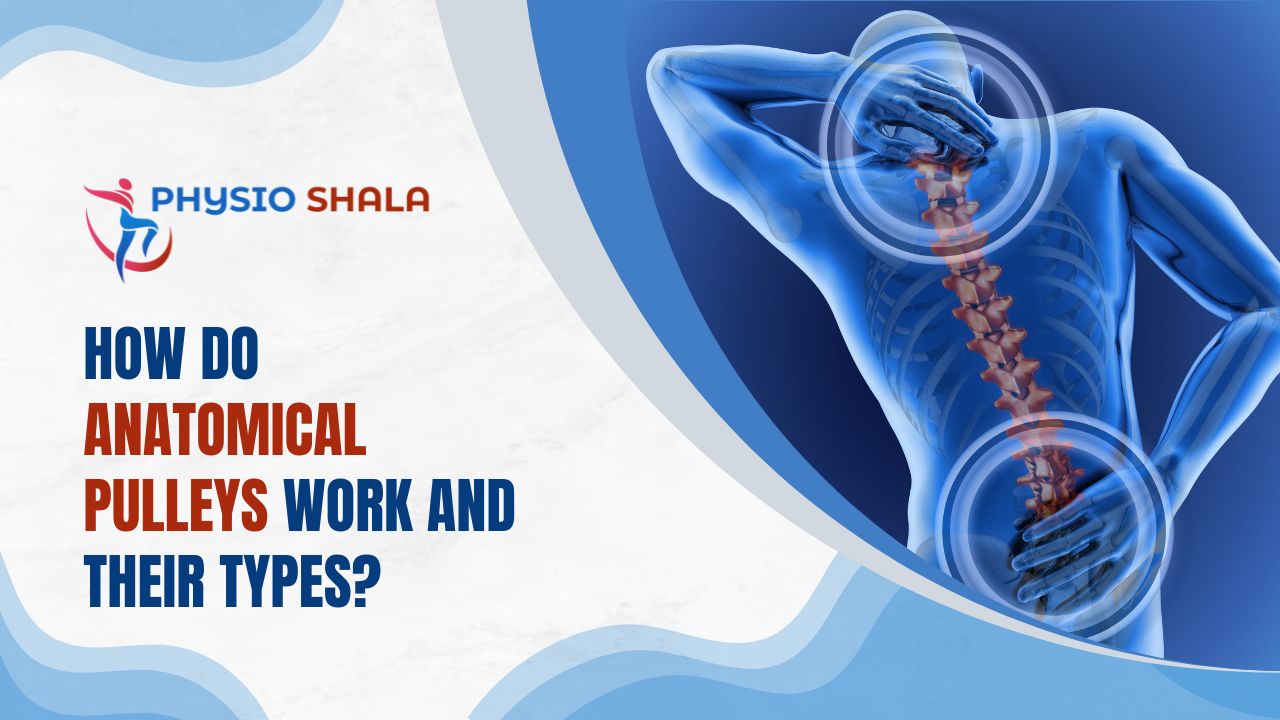Pulley is a simple machine consisting of a grooved wheel that rotates about a fixed axis, and the rope passes through the groove. Pulley is used to changing the direction of the force applied to move an object. The more the number of pulleys is used, the easier it becomes to move or lift the object.
A simple pulley consists of the following:
- Axle – it holds the wheel in place
- Wheel – it is grooved and allows the rope to move around it smoothly
- Rope – it is pulled across the wheel and axle and makes moving the object attached to the other side easier
Types
- Fixed Pulley- The pulley is attached to the fixed point and it acts as a first-order lever with the weight (R) on one side and the effort (E) on the other, and the fixed point in the middle acting as the fulcrum.
A fixed pulley is used to change the direction of the force. No mechanical advantage is gained through this. Fixed pulley analogous in the human body- sometimes the fixed pulley-like system is used by certain muscles which allow them to insert at a more advantageous angle.
Example– Digastric Muscle- it has two bellies namely anterior and posterior which unite above the hyoid bone as the intermediate tendon. A U-shaped fibrous tissue sling- anchored on the superior side of the body of the hyoid bone, encircles the intermediate tendon. It acts as a pulley allowing the tendon to slide anteriorly and posteriorly.
- Movable Pulley- As the name suggests this type of pulley is not fixed in one place rather it moves along the rope. One end of the rope is attached to a fixed point and the other passes through a fixed pulley. The wheel of the movable pulley supports the weight and is attached in between the fixed point and the fixed pulley.
This works as a second-order lever and thus provides a mechanical advantage in lifting heavier weights.
This type of pulley is used in the suspension therapy units making it easy to lift the trunk for suspension exercises.
- Compound Pulley- It has a combination of movable and fixed pulleys. At least two pulleys must be there. The more complex the pulley the easier it becomes to move the load as the effort decreases.
Anatomical Pulleys
In the human body, there are many examples of pulley systems where the tendon of a skeletal muscle slides over the round surface of a bone. This system acting as a pulley allows for the change in the direction of muscle pull/force and is referred to as an anatomic pulley
In most of the cases:
- The wheel part is replaced by the bone, cartilage, or ligament
- The rope part is replaced by the muscle’s tendon (which is lubricated so that it can slide easily over the pulley)
Examples:
- Patella at knee- pulled between the condyles of the femur
patellar tendon – patella – quadriceps arrangement- the quadriceps muscles pull proximally toward their bellies and yet the knee extension (from flexed position) cause the leg to move in the opposite direction
- Lateral Malleolus
lateral malleolus of the fibula acts as a pulley around which the tendon of peroneus longus runs. As peroneus longus contracts, it pulls toward its belly (toward the knee).
If the lateral malleolus was not there, then the peroneus longus would have passed in front of the ankle joint producing ankle dorsiflexion and eversion. But due to the presence of lateral malleolus the peroneus longus muscle passes from behind it and inserts at the base of the first metatarsal and thus produces ankle plantar flexion and eversion.
Lateral malleolus working as a pulley transmits the force to the plantar aspect of the foot leading to plantar flexion and eversion movements.
- Trochlea of the eye- Trochlea is cartilage present in the eye over which the tendon of superior oblique muscle passes. It allows the muscle to rotate the eye obliquely
References –
https://en.wikipedia.org/wiki/Pulley
https://sciencing.com/3-types-of-pulleys-12393122.html

